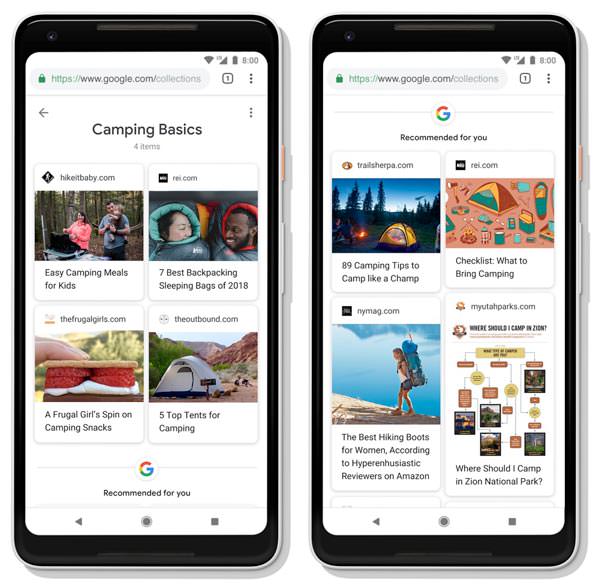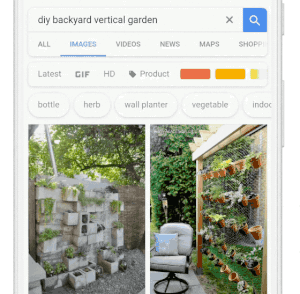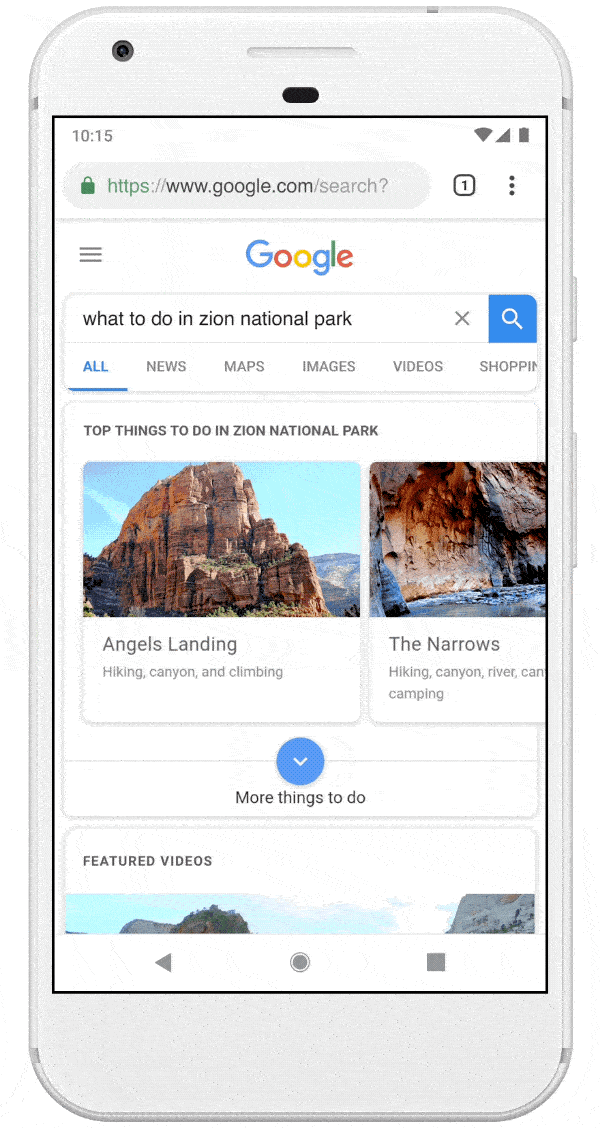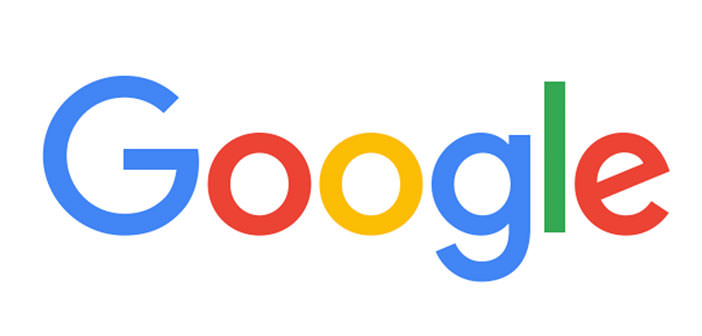Google is 20 years old and releases an avalanche of new features
The search engine created by the Mountain View company has turned 20. To celebrate with its users has decided to introduce many features such as the Activity Card but also AMP Stories and integrations with Google Lens. Let’s see everything together.
Google as a search engine was born in the distant 1998 or just twenty years ago. His arrival in the world immediately aroused strong interest and over the years, the company has managed to bring it to a market share of 90% and managed to practice as many as 3 billion searches a day. Its initial purpose was the search not only of text in documents published directly on the Web but also of images and other data contained in the database.
Here to celebrate these 20 years, Google, has decided to implement many features that can improve the use of Google Search.
Activity Card
 The first, by importance, is undoubtedly the new Activity Card that is the ” memory ” that Google integrates into its system, and that allows to detect all the steps and research carried out in the past by inserting a term already researched. In practice, the Activity Cards do nothing but view the pages visited related to a specific topic sought. A sort of ” déjà vu ” that could be very comfortable for those who want to retrace past moments.
The first, by importance, is undoubtedly the new Activity Card that is the ” memory ” that Google integrates into its system, and that allows to detect all the steps and research carried out in the past by inserting a term already researched. In practice, the Activity Cards do nothing but view the pages visited related to a specific topic sought. A sort of ” déjà vu ” that could be very comfortable for those who want to retrace past moments.
Google Lens
Google Lens is nothing more than the functionality implemented by the company that is able to easily recognize with a click or an image information exploiting Artificial Intelligence. In this case, the news will concern machine learning as well as the extensive use of neural networks.
 Just press the specific button of Google Lens to allow the algorithm to automatically recognize the objects shown in photos or images. Afterwards, it will be possible to carry out research on the results displayed. Also interesting is the fact that users from now on will also be able to draw a specific area on the image to be able to direct the visual recognition only on that portion of the photo.
Just press the specific button of Google Lens to allow the algorithm to automatically recognize the objects shown in photos or images. Afterwards, it will be possible to carry out research on the results displayed. Also interesting is the fact that users from now on will also be able to draw a specific area on the image to be able to direct the visual recognition only on that portion of the photo.
AMP Story
As for the AMP Story, other than the news made with the Accelerated Mobile Page to facilitate fast loading and optimized web display of content. In this case, the stories introduced by Google in your feed include images, short videos, infographics, as well as more or less short descriptions to provide information quickly and completely to the viewer.
 Here with today’s news, the company of Mountain View, will insert precisely also in the results of Google Images research, and the user can have an additional tool that can provide additional information on research.
Here with today’s news, the company of Mountain View, will insert precisely also in the results of Google Images research, and the user can have an additional tool that can provide additional information on research.
 In this case, the algorithm is used to create AMP stories dedicated to sports stars, athletes and celebrities. The newspapers and portals that have adopted AMP will see the contents published in the search results appear, so at least, for the moment, we do not talk about Stories created by users.
In this case, the algorithm is used to create AMP stories dedicated to sports stars, athletes and celebrities. The newspapers and portals that have adopted AMP will see the contents published in the search results appear, so at least, for the moment, we do not talk about Stories created by users.
Preview of videos
Also new is the ” Featured Videos Google ” feature that now allows you to show selected videos based on the topic searched by the user. In practice, it is a carousel of small thumbnails visible when you go to search for particular places and thanks to which it will be possible to have a brief overview of the research. 
In this case, the previews will occupy half the screen and can then be expanded directly into the YouTube application or the service on which they are loaded.
Google Discover
Finally, the icing on the cake of the novelties of Google remains the new Discover that is a new service capable of providing relevant information and quality even when the user has no questions or a term to search. Everything will be reconnected to the activities or interests previously carried out such as news on the team for which the user is rooting or maybe even on commercial premises near our home.

Google Discover will be a real card positioned in the search application and for the user, it will be easy to use it because it will be enough to click on each search to expand the visualization of the articles or to see the videos selected according to interests.

